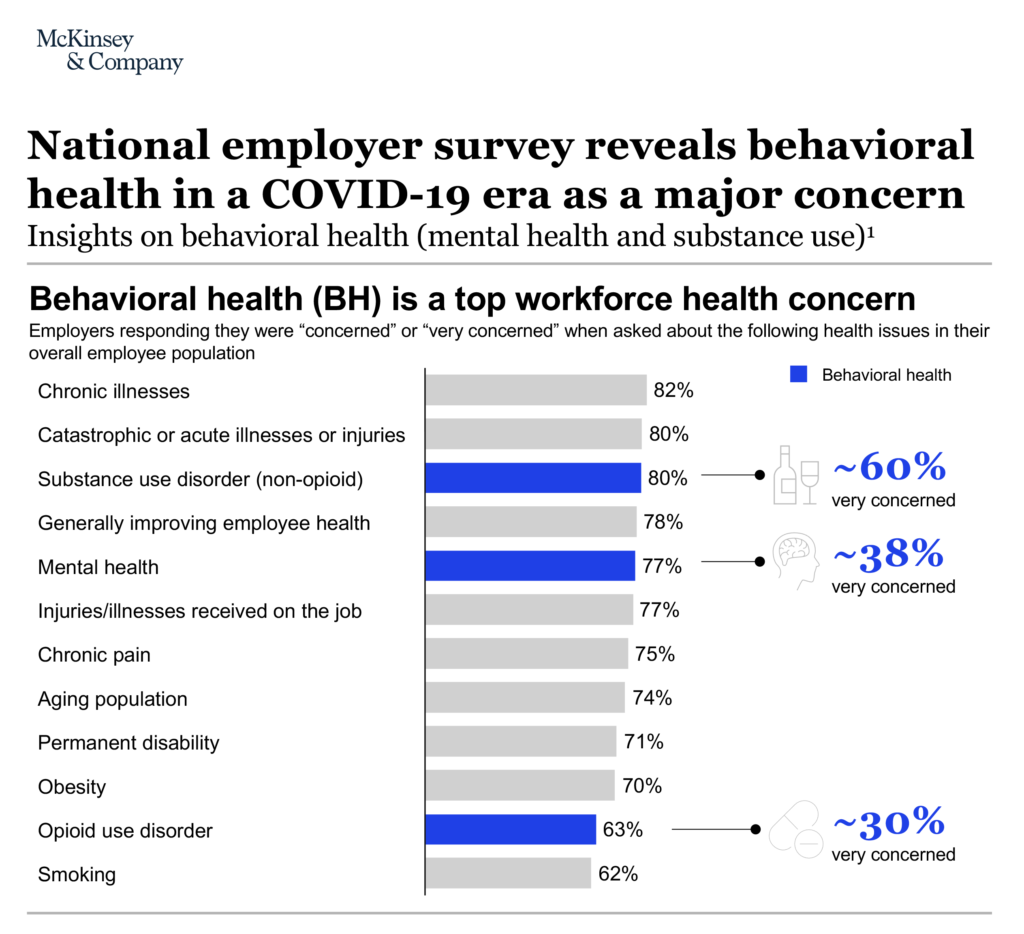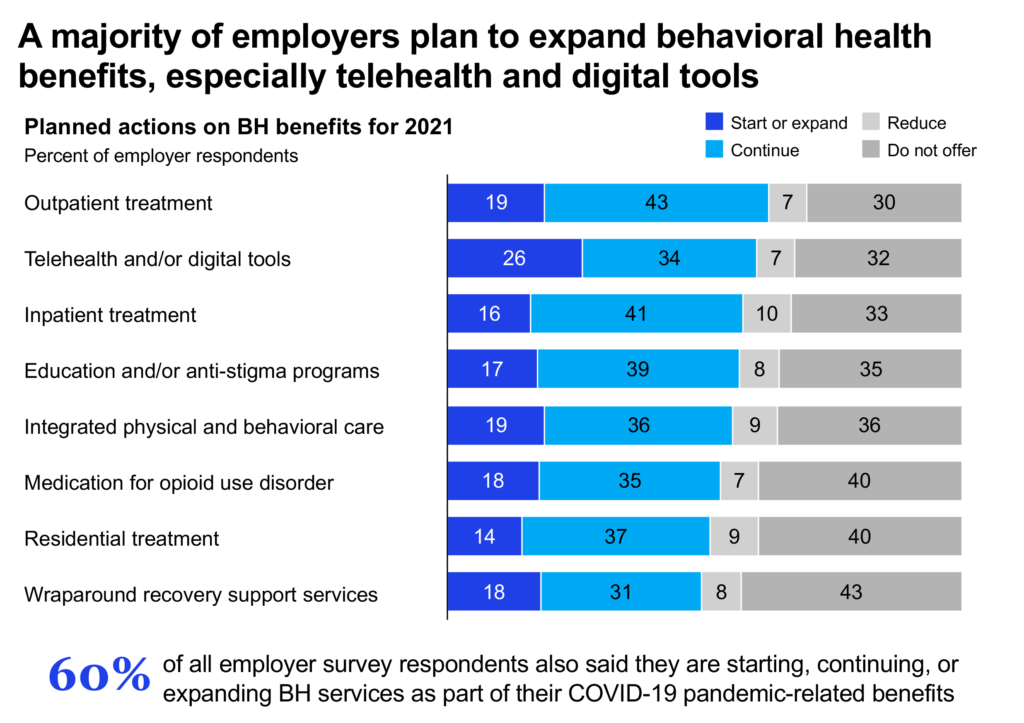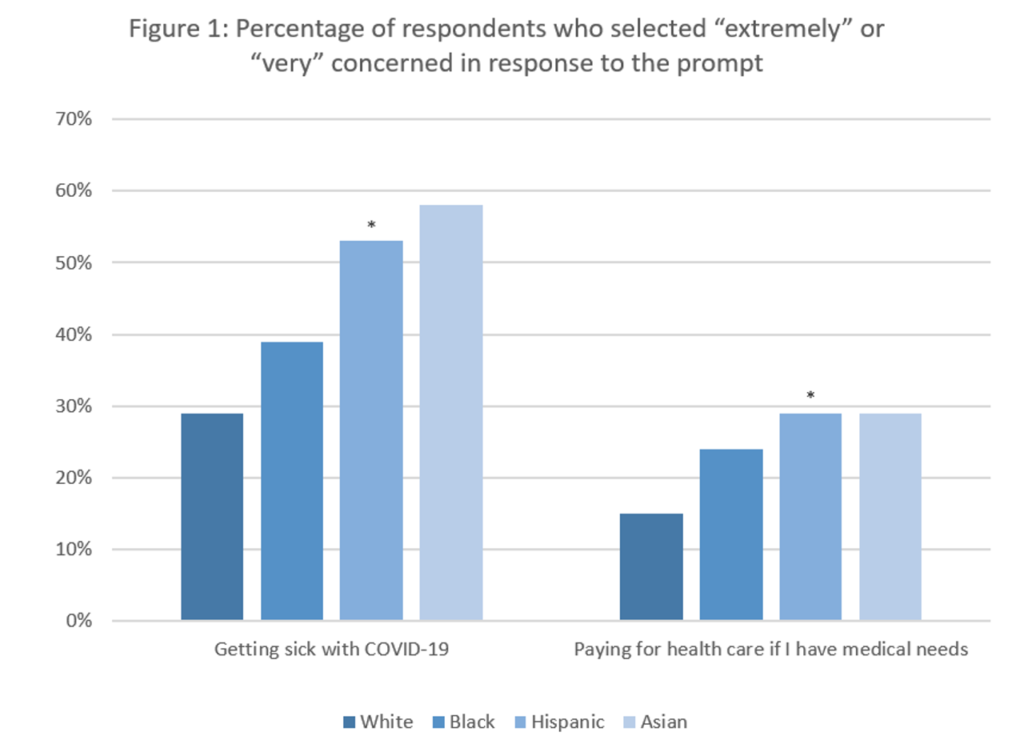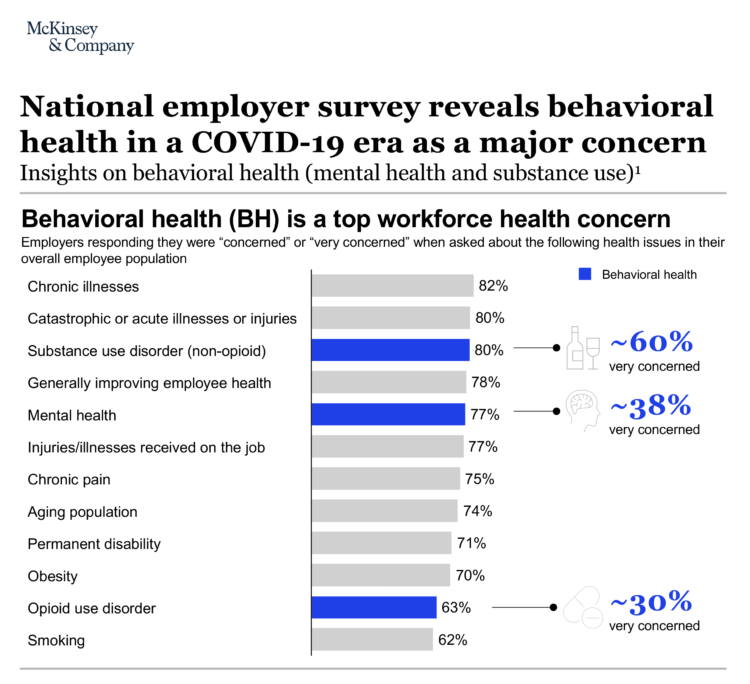 Most U.S. employers worry about workers’ mental health and substance use as employees begin returning to work in the summer of 2020.
Most U.S. employers worry about workers’ mental health and substance use as employees begin returning to work in the summer of 2020.
About 4 in 5 U.S. companies are “very concerned” or “concerned” about employees’ chronic illnesses, acute illnesses, and injuries along with behavioral health issue, based on McKinsey’s annual employer survey which coincided this year with the COVID-19 pandemic.
Challenges of opioid use in the workforce remain a concern for two-thirds of U.S. companies, as well.
Some 9 in 10 U.S. companies say behavioral health has a negative impact on workforce productivity. In response, 7 in 10 employers are taking action to address workforce mental health:
- 32% of companies are making significant investments naming behavioral health a top priority for human resource departments; and,
- 39% are making “some” investment or putting interventions in place to address mental health.
Larger employers are more likely to deal head-on with behavioral health benefits. McKinsey found that larger companies were nearly twice as likely as smaller firms to provide outpatient treatment; twice as likely to provide telehealth (tele-mental health) or digital tools to empower workers to deal with behavioral health; over twice as likely to provide medication for opioid use disorder; 2.4 times more likely to integrate behavioral health and physical health care.
 The second chart illustrates these details by employers’ intent to expand, continue, or not offer various behavioral health services. Overall, 60% of companies said they would take some action concerning behavioral health on behalf of their workforce.
The second chart illustrates these details by employers’ intent to expand, continue, or not offer various behavioral health services. Overall, 60% of companies said they would take some action concerning behavioral health on behalf of their workforce.
The top benefit provided for behavioral health will be outpatient treatment, expanding or continuing for 62% of companies. Telehealth and digital tools will be deployed by 60% of employers, with the largest “start-up” percent at 26% of companies. This faster growth rate for telehealth and digital tools has been demonstrated in consumers’ and providers’ fast-adoption of virtual visits in the early phase of the COVID-19 pandemic. Here, employers are shown to support telehealth and digital tools, inpatient treatment
It’s great to see that education and anti-stigma programs related to mental health will be expanded or started up by 56% of companies. And, also promising that 55% of firms plan to integrate physical and behavioral care, bringing mental health to the on-ramp of primary care and physician visits.
McKinsey polled about 1,000 U.S. employer benefits decision makers in April 2020.
 Health Populi’s Hot Points: Mental health crises will be the pandemic-after-the-pandemic.
Health Populi’s Hot Points: Mental health crises will be the pandemic-after-the-pandemic.
This survey from NORC-AP, published yesterday (16 June 2020) and others demonstrate that mental health and stress due to COVID-19 impact different demographic groups differently: children and teens have been hard-hit by the pandemic in the #StayHome, home-school and physical distancing era. So, too, have people of color, who have experienced greater financial distress due to job losses and, at the same time, proportion of workers on the front-line of COVID-19 in care and service jobs that have kept the U.S. “essential economy” running from February to the present day. Small business losses and closures have also disproportionately impacted people of color and indigenous people (BIPOC, discussed here with organizations working to address health equity in and beyond the COVID-19 era).
Employers, indeed all organizations, have essential roles to play and work to do to address mental health for stakeholders in their workplaces and larger communities. As Tom Welchman of McKinsey asserted in another report on employee morale in the pandemic, “This is a crisis, but it’s also an opportunity for organizations to live their purpose. So thinking through what is it that they want to be known for, and what is it that they want to be remembered for coming out of this crisis, is a topic that every executive team should be talking about.”





 Thank you FeedSpot for
Thank you FeedSpot for